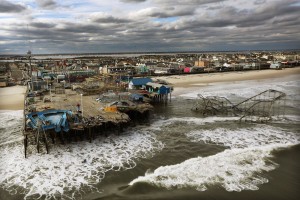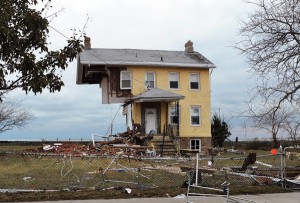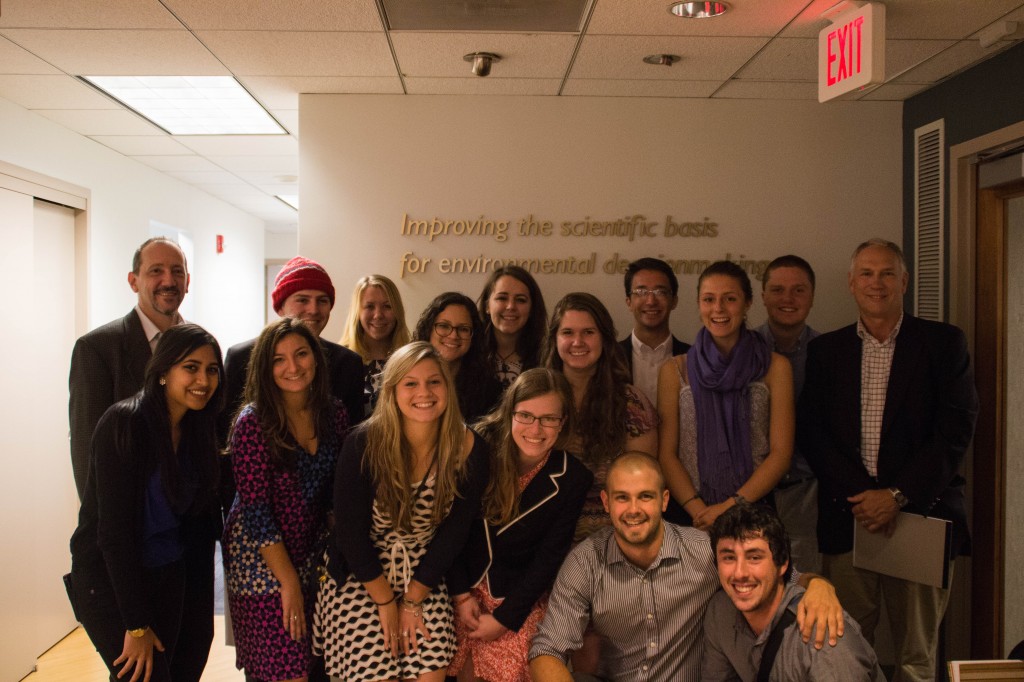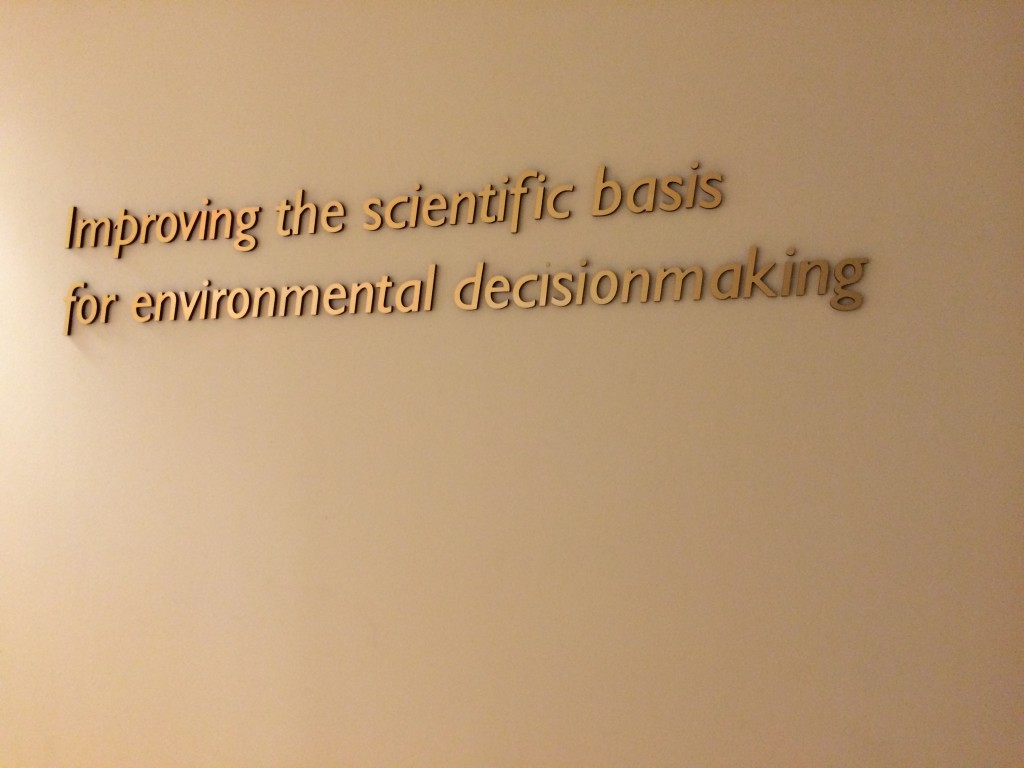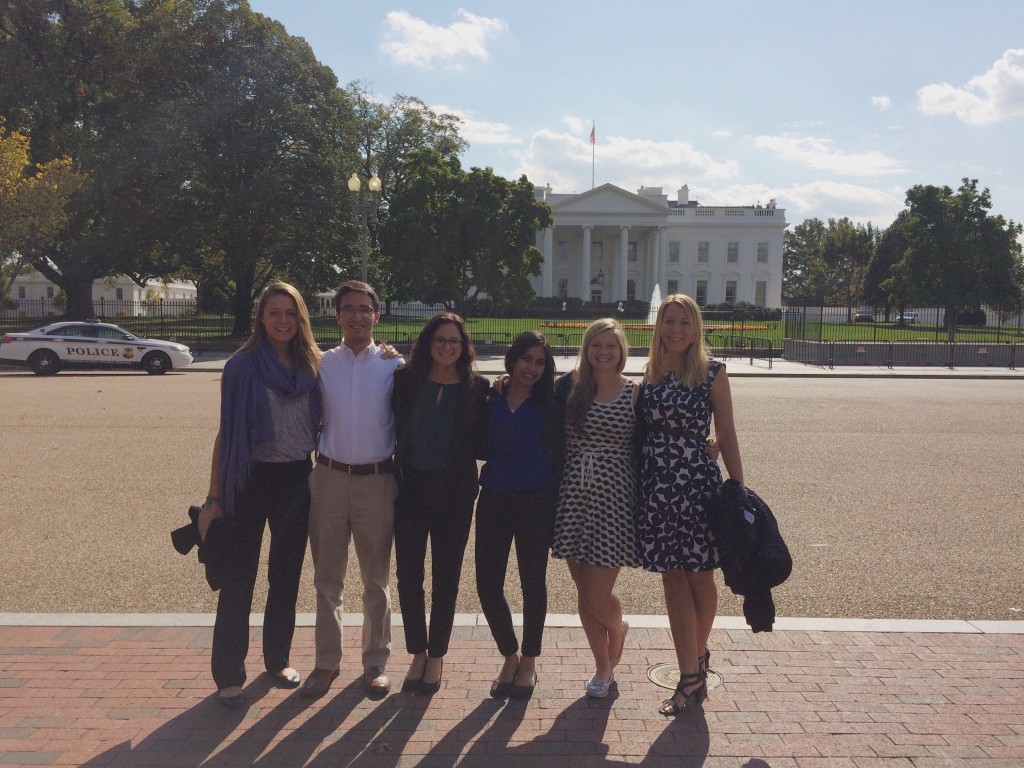Two years ago the Jersey Shore, a place where I call home, was devastated by Hurricane Sandy. My friends and family were left without heat, electricity, and some were left without homes. While my family was fortunate enough to have mild damages to our properties, others had lost everything. The first time I returned home, about a month after Sandy, there were still incredible signs of the destruction. Boats were still washed up on major roads, the streets were still full of debris, and beach towns resembled ghost towns. I observed places that were once very familiar seem almost unrecognizable.
This famous photograph (above) was taken in a nearby town, which I recalled having to pull a u-turn in the driveway during the previous summer months. Hurricane Sandy forever altered the landscapes of the Jersey Shore.
During our trip to Washington DC, we spoke with Joel Scheraga, the Senior Advisor for Climate Adaptation in the Office of Policy in the Office of the Administrator at the U.S. Environmental Protection Agency. Joel Scheraga spoke to us about the importance of mainstreaming climate adaptation planning. As we have already seen impacts of climate change through intensifying natural disasters like Hurricane Sandy, it is imperative that the process of redevelopment incorporates climate-resilient methods. It is the EPA’s mission to anticipate and plan for future changes in climate. Climate adaptation will prepare the world for the impacts of climate change.
After meeting with Joel Scheraga, I began to wonder in what ways the Jersey Shore was rebuilt to withstand future climatic events.
Will New Jersey be ready for the next superstorm?
These images show the changes in the landscape after the destruction of Hurricane Sandy.

